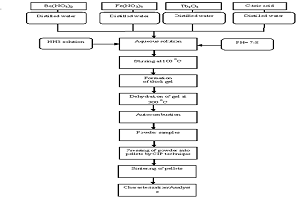Day :
- Track 1: Renewable Energy and Resources | Track 2.Solar Energy | Track 6: Wind Energy
Session Introduction
Seungbae Lee
Inha University, South Korea
Title: Noise characteristics of small horizontal wind turbine
Time : 12:40-13:10

Biography:
Seungbae Lee has received his undergraduate BS degree and graduate MS degree in Mechanical Engineering both from Seoul National University, South Korea.
He has received his PhD degree in Mechanical Engineering from University of California, Loa Angeles. His research area of interest includes wind turbine design,
modeling and analysis, aero-acoustics, turbo-machinery design, noise control and indoor air quality.
Abstract:
Whistling noise from rotating blades is one of major obstacles to wide-spread application of small wind turbine energy generation for on-grid or off-grid utilization in rural areas. These machines are frequently located close to residents and operate at relatively high rotational speeds. Depending on the Reynolds number at each section of the blade, its aerodynamic performance and noise characteristics varies significantly due to the transitions from laminar to turbulent flows. The aerodynamic performance and noise signatures of three types of blades of a 500W, 1.5 m diameter rotor HAWT were evaluated. ANSYS CFD code and in-house code solving Ffowcs Williams-Hawking (FW-H) equations based on permeable surface are used in this research. The flow simulation is conducted solving the three-dimensional, unsteady, Reynolds-averaged Navier- Stokes equations with a shear-stress transport turbulence model. Based on the time histories of surface pressures and velocity fluctuations by the CFD calculation, the far-field, aero-acoustic propagation is calculated by solving the FW-H equations. The aerodynamic performance and acoustic characteristics for three sets of blades with different chord length and twist angle distributions were simulated and compared in this research. The blade #2 and #3 models showed the similar power performances with the power coefficient of 0.39 while the degraded performance was observed for the blade model #1 model with power coefficient of 0.34. The overall sound pressure levels at the specific observer locations were calculated as 46.36 dB, 46.55 dB and 51.46 dB for blade model #1, #2 and #3, respectively. The current study explained the aero-acoustic performance changes in terms of the rotor blade Reynolds number distributions. The computation of aerodynamics and aero-acoustics for the small wind turbine showed good agreement with experimental data.
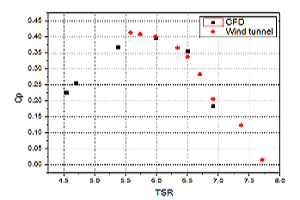
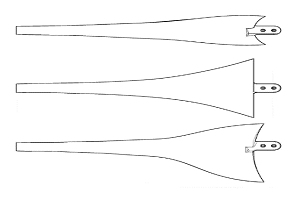
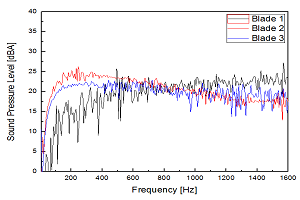
Joop van Deelen
Solliance Solar Research, Netherlands
Title: Research and business cases for thin film solar cells: benefit of thinner, cheaper layers and tandem cells
Time : 14:00-14:30

Biography:
Joop van Deelen is senior scientist at TNO with 20 years of R&D experience and over 60 publications. He has covered a broad range of thin film PV related topics including deposition technologies, optics, front contacts, R&D strategy and business case development. In addition to his R&D activities, he consults companies on technical and strategic level in various parts of the world.
Abstract:
R&D has had a major impact in the rise of renewable energy. In addition to basic research, dedicated development enables the increase of the energy conversion efficiency. However, in the competitive market economy, companies have to make strategic choices about the viability of innovation directions. For this reason scientific, technical and economic aspects need to be combined to make smart choices in innovation. We present several innovation routes in which Solliance has activities: improved transparent contacts, reduction of CIGS layer thickness, cheap absorber layers and tandem cells. Each innovation route has its specific advantages, but is connected to equally specific requirements to the layers surrounding the absorber, which need to be addressed. The efficiency increase and the cost associated with the technological solutions result in a balance, which is the net advantage. For instance, thinning of the CIGS layer brings a significant cost reduction [1,2]. However, light management technology [3] and enhanced surface passivation is needed to keep the efficiency as high as possible. This leads to a range of innovation scenarios including various device designs and material choices, which will be detailed, from which the best choice becomes apparent. A vital element is the interdependence of all these factors. For different absorber layer thicknesses, different preferred adjacent technologies emerge for passivation and light management. For improved transparent contacts, we have modeled and demonstrated the benefit by adding metallic grids on the TCO, as shown in figure 1 [4-6]. Here we also discuss the technical challenges, the economic perspective and the trade-offs involved. One of the spearheads of modern thin film PV research is the development of perovskite solar cells. It gives the promise of cheap and abundant source materials and low-cost coating technologies to make devices. However, in addition to the limited life time, we should clearly envision the impact of such a new material and the impact on the cost structure. In addition, the promise of very high efficiency in the case of large area tandem cells can be regarded as a mid- to long-term strategy and also here the technical and economic pros and cons are reviewed.

Dharmalingam Sangeetha
Anna University, India
Title: Basic ionic liquid grafted SBA-15/quaternized polysulfone composite membrane for alkaline fuel cell
Time : 14:30-15:00

Biography:
Dharmalingam Sangeetha has been working as an Assistant Professor at Anna University since 2004. She has published more than 131 papers in reputed journals and has contributed more than 196 papers in national and international conferences. She has filed seven patents in the fields of fuel cell activities. She was selected as one of the top 50 innovators of India by the DST Lockheed Innovation Growth Program 2012. She was also chosen as one of the top 10 finalists as the best Chemistry Teacher by the Tata Chemicals 2012.
Abstract:
Recently, increased attention is being paid to alkaline fuel cells employing anion exchange membrane (AEM) electrolyte as an alternative to proton exchange membrane fuel cell (PEMFC). AEM is the heart of the Anion Exchange Membrane Fuel Cell (AEMFC), the vital functions of which include; preventing the mixing of fuel and oxidant, increasing the reaction rates at both the electrodes and permitting ions (OH-) to migrate from the cathode to anode (the hydroxyl ion flow direction is opposite to the flow of protons in PEMFC). As a result, AEMFC has many advantages over PEMFC, such as remarkable electrode reaction kinetics, the use of non-Pt catalysts like Ag, Fe, Co and Ni, reduced fuel cross over and easier water management. In recent times, organic-inorganic hybrid membranes have been developed by combining the beneficial properties of organic and inorganic materials by incorporating inorganic filler components into polymer base matrix. Such hybrid membranes possess improved physicochemical and thermo-mechanical properties. In the present study, a novel hybrid membrane was synthesized based on ionic liquid grafted mesoporous silica. In brief 1-Methyl-3-(3-trimethoxysilylpropyl) imidazolium chloride, an imidazolium based ionic liquid was synthesized and chemically grafted onto the synthesized mesoporous silica (SBA-15), resulting in a mesoporous solid (IL-SBA-15) with ion-exchange properties. The prepared IL- SBA-15 was characterized by FTIR, solid state CP/MAS 13C NMR, solid state CP/MAS 29Si NMR, BET, XRD and TEM. Composite membranes with high ion exchange capacity (IEC) were then prepared by incorporating IL-SBA-15 into the quaternary polysulfone (QPSU) in different weight percentages (1, 2, 3 and 4%). The morphology and crystalline nature of the membranes were analyzed by SEM and XRD respectively. The membrane properties such as water uptake, IEC and hydroxyl conductivity were studied for its suitability in AEMFC. The prepared membranes were tested in an in-house built AEMFC of 25 cm2 electrode area with platinum anode (0.25 mg/cm2) and silver cathode (0.375 mg/cm2). Among the various membranes tested, 3wt% IL-SBA-15 containing composite membrane showed a maximum power density of 278 mW/cm2 at 60ºC. The results suggest that these composite membranes have a promising potential to be used as an electrolyte in future AEMFCs.

Adel Younis
Australian College of Kuwait, Kuwait
Title: Improved optimization search tool for self-regulating smart distribution system with wind energy integration
Time : 15:00-15:30

Biography:
Dr. Adel Younis, PhD, P.Eng., a faculty member and professional engineer and researcher in the province of British Columbia, Canada and former research
associate at both University of Victoria (UVic) and Simon Fraser University (SFU) in Canada. Dr. Younis has worked as a professional and lead project engineer in
oil and gas; renewable energy, hydroelectric; and mechanical sectors around the world. He has been teaching mechanical and materials engineering courses at
UVic, SFU and currently at Australian College of Kuwait (ACK). Dr. Younis’ areas of interest are engineering design, optimization of complex mechanical systems,
and renewable energy. He has published many research papers pertaining to mechanical, optimization and renewable energy. He has more than 18 years of work,
research and teaching experience in mechanical, materials and structural engineering areas.
Abstract:
As an integral part of a smart grid, the smart distribution system is an important concept that employs advanced communication, control and information technologies to manage and optimize the resources of a feeder in order to improve energy efficiency and customer power consumption patterns, increase penetration and storage of Renewable Energy(RE) thereby decreasing GHG emissions and enable markets, consumer motivation and participation. For electrical distribution systems and demand-side management, demand response (DR) control is an emerging concept to manage customer power consumption patterns in response to system operation conditions and to minimize (or provide) system ancillary services while maintaining customer-side comfortable usage requirements. Reliable bidirectional smart grid communications and customer’s grid-friendly participation provide new opportunities that enable DR to be employed to optimize grid operation utilizing the energy storage capability of modern homes via control of heat pumps and in the near future, plug-in electric vehicles (PEVs). Considering the complex interactions between an electrical distribution network and grid resources, in a quasi-steadystate simulation environment, optimal operation and management requires robust global optimization techniques that also incorporate distribution load flow simulations to optimally integrate RE generation, loads and corresponding DR control strategy. System power loss reduction was selected as an objective for the optimal distribution load flow optimization and the optimization process simulates load calculations and demand-side DR resource control. Residential heat pumps with thermal energy storage were chosen as typical DR resources to help regulate system power balance. An advanced recently improved metamodel-based global optimization (MBGO) search tool, named Approximated Promising Region Identifier (APRI) algorithm, was applied to determine minimum system power losses and optimal DR resources operation to offset wind fluctuations. This MBGO tool solves complex global design optimization problems with black-box objective/constraint functions and is ideally suited to this complex, computationally intensive application. The optimal control solution was compared with the un-optimized results to show the benefit of the proposed advanced optimizer. The inability to achieve an optimized solution and the poor computational efficiency of conventional optimization approaches in identifying the correct global optimum are also illustrated. The novel optimization method prospects the whole design space by generating sample points, reporting evaluating information using a surrogate model and then focusing the search in the most promising region by deploying more agents. Using the integration of these adaptive tools and methods, the optimization results are considerably promising in terms of computational efficiency and performance enhancement of the turbomachinery blade airfoil shape in
both design and off-design conditions.
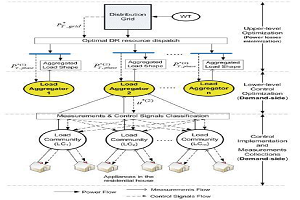
Ali Fahrettin Kuyuk
University of British Columbia, Canada
Title: Heat transfer analysis of single and multiple geothermal heat extraction boreholes, Numerical versus analytical comparison
Time : 15:30-15:50

Biography:
Ali Fahrettin Kuyuk is an Assistant Professor at Norman B Keevil Mining Engineering Institute of The University of British Columbia, Vancouver, Canada. Prior to joining UBC, he did his PhD and Post-doctoral studies at McGill University. His research includes the study of various mechanical and energy systems with a specific emphasis on mining and petroleum industries. His research team focuses on developing novel solutions for maximizing energy efficiency, improving system performance, preventing waste of energy, and replacing fossil fuels with renewable energies.
Abstract:
Numerical appreciation of any heat extraction scenario can be reliable yet it may cost escalated computational times due to the complex nature of three-dimensional gridding. Accordingly, simplified one-dimensional analytic solutions of such problems could ease this requirement. In the light of this, heat transfer responses of three discrete installation scenarios of cylindrical heat extraction boreholes are studied analytically and discussed in this present study. Each scenario is modeled in a computer aided environment aiming to validate driven analytic solutions. Contemporary unsteady state, time dependent heat transfer equations are modified and related governing differential equations are introduced to Wolfram’s Mathematica. Gathered analytic responses from these scenarios on specified boundary conditions are then contrasted with their corresponding numerical representations, modeled in ANSYS, Fluent. It is shown that, 1-D analytic representation of such cylindrical heat extraction scenarios yield sufficiently approximate results in comparison to their complex numerical equivalents, while understanding time dependent energy extraction rates and source depletion. Consequently, findings of this study demonstrate that similar heat flux results can be obtained with faster computational times in heat transfer modeling of cylindrical heat extraction boreholes.
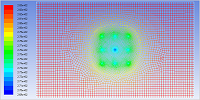
Mina Bahrami Gholami
University of Auckland Energy Center, New Zealand
Title: Potential solar and wind power expansion in the New Zealand Network
Time : 16:15-16:35

Biography:
Mina Bahrami Gholami is a PhD candidate of economics at the University of Auckland. With knowledge on both econometric and mathematical methods, she is passionate about environmental issues including topics on mitigating emissions and renewable energies. She has nearly completed her doctoral research on evaluating the opportunities for solar PV generation, and the impacts of large solar and wind power on the New Zealand electricity market. Applying agent based model, using the solver SWEM that is developed by the Energy Center, she simulates power market to answer the open questions about the effects of intermittent power extension on nodal and national prices. Her background goes back to environmental economics. For her Master’s thesis, she conducted a comparative study on greenhouse gas emissions in OECD and OPEC countries using econometric approach, panel data.
Abstract:
Renewable generation, solar and wind, has constantly increased over the last decades. Increasing the share of renewable generation, it is well known that power price is likely to reduce in short-run due to the merit order effect. In long term, the effect also depends on changes in new capacity investments. Previous studies examine the effect of intermittent energies in different electricity markets. For a hydro-based system such as New Zealand, increasing the share of variable resources is more important as the main supply is changeable and depends on climatic conditions. Wind power expansion for this network is well studied by Browne et al. (2015); however, they do not consider solar power in their model. New Zealand seems to be reach enough to access adequate sun radiation for the purpose of power generation, particularly in the North Island. Therefore, the contribution of this study is introducing large solar power into the system. We extend the literature by simulating the power market, using an agent-based model, in order to answer the question of whether wind extension is the best solution in terms of the impacts on electricity price and dispatch or the solar aggregated wind power scenarios would better fits the existing network. We investigate this issue for the case of New Zealand as a small and pure hydro-based network yet the methodology is applicable for other power networks as well.
Yousif M. Makeen
University of Malaya, Malaysia
Title: Hydrocarbon source potential of Tertiary carbonaceous shale, shale and siltstone of eastern Chenor, Penyu basins, Pahang, Malaysia
Time : 16:35-16:55

Biography:
Yousif M Makeen has completed his BSc degree in Applied Geology from University of Malaya, Malaysia in 2011. His MSc was converted to PhD by the University Senate based on his excellent performance. His professional career began in 2015, when he received his PhD from University of Malaya. His research interests are in oil, source rock characterization and petroleum systems modeling. He has published 20 papers in ISI journals and conducted many consultation projects for major oil companies. He is currently a Post-doctoral Research Fellow at the University of Malaya.
Abstract:
Malaysia and Asian region have a number of petroleum-bearing sedimentary basins commonly associated with coal and carbonaceous shale strata. Shales are the common source rocks of conventional petroleum resources whilst coal although a source for conventional liquid hydrocarbons, are more widespread as unconventional resources, such as cannel coal and coal bed methane (CBM). Coals within the oil and gas producing provinces of Malaysia and SE Asian region in general are known to be oil-prone. However, with the inevitable decline in conventional petroleum, remaining hydrocarbons will be more difficult to find and more expensive to develop. Set against the backdrop of world energy consumption projected to increase 49% by 2035, alternative sources of energy are being sought. Petroleum geoscientists are exploring unconventional source/reservoir systemssuch as the carbonaceous shale, oil shale, tight sand, coal bed methane and fractured basement. In this study, shale and siltstone which are an importance sedimentary facies for hydrocarbon exploration in the eastern Chenor, Pahang have been investigated using organic geochemical and petrological methods as well as Micro-CT, SEM (Scanning Electron Microscope). The tertiary sediments of eastern Chenor show a general trend of low thermal maturity based on vitrinite reflectance measurements (<0.5% Ro) and Tmax (<435 oC). Organic petrological studies revealed that analyzed carbonaceous shale and shales are rich in liptinite macerals (>20 vol.%) such as aliginite (Botryococcus algae), sporinite, cutinite and amorphous organic matter indicating oilprone Type-I and Type-II kerogens. Pyrolysis data also show a trend from predominant oil-prone Type-I and II kerogens to mixed oil and gas-prone Type II-III kerogens within the studied samples except for the siltstones samples which have low HI value indicating no potential for hydrocarbon generation. The EOM result shows that all the carbonaceous shale samples possess excellent values for the bitumen/EOM and hydrocarbon (HC) content. The studied shale samples have very good petroleum potential. However, analyzed siltstones show poor to fair petroleum potential based on for the bitumen/EOM and hydrocarbon (HC) content. This is supported by plots of TOC content versus extractable organic matter (EOM) and hydrocarbon yields versus TOC content commonly used in estimating the hydrocarbon generative potential of the source rocks.
Rafael Perez-Pena
New Mexico State University, USA
Title: Energy demand determinants in Mexican households, 2008-2014
Time : 16:55-17:15

Biography:
Rafael Perez is a doctoral candidate in economic development at the Economics, Applied Statistics & International Business Department (EAS&IB) of New Mexico State University (NMSU). His research interests are energy economics, agricultural and resource economics, economic development, international economics and macroeconomics. Mr. Perez is a young researcher from the US-Mexico border region so he is particularly passionate about the US and Latin-American economic relations. Mr. Perez has collaborated in energy-related projects for the United States Department of Agriculture, the United Nations, and academic institutions in the US, Mexico, and Brazil. Benjamin Widner is a faculty member at the EAS&IB of NMSU. Dr. Widner obtained his Ph.D.at Colorado State University. His research interests are urban/regional economics, public finance, microeconomics, development, econometrics, managerial economics, environmental economics, macroeconomics.
Abstract:
Statement of the Problem: Substitutability and complementarity between different energy sources and energy access are relevant factors explaining the household energy demand in developing countries. Previous researchers analyse the relationship between different energy sources and the Mexican government as well as international agencies compute energy access indicators and based on these results establish energy policies and goals. Mexico has the highest ranking in energy access terms as pointed out by the World Bank (WB) and the International Energy Agency (IEA). The main purpose of this paper is to analyze the relationship between the demand for energy and the energy price, energy access, household income, education of the household head, and size of the localities of Mexican households from 2008 to 2014. Methodology & Theoretical Orientation: This research uses an econometric model, computes an average energy price variable and an alternative energy access variable. The average energy price is used to test for complementarity and substitutability between energy sources (coal and fuel wood and natural gas, LPG, and electricity). The energy access indicator serves as an alternative measure to those conducted by the WB and the IEA and can be used to examine feasibility of international goals and national energy policies.Preliminary results suggest that modern energy sources (natural gas, LPG, and electricity) are substitutive goods between each other but they are complementary goods to traditional energy (coal and fuel wood). In addition, energy access is one of the most significant determinants of energy demand in Mexican households. Energy access impact varies when alternative energy access indicators are used. Recommendations: energy access indicators in Mexico should be revised for different energy sources. Renewable energy can contribute to improve energy access in Mexican households.
Abdulbaset Saad
University of Victoria, Canada
Title: Kriging-Bat design optimization algorithm for floating offshore wind turbine support structures
Time : 17:15-17:35

Biography:
Abdulbaset Saad is a PhD candidate in the mechanical engineering department at the University of Victoria, British Columbia in Canada. He is working on
developing global optimization algorithms for complex engineering problems. He has developed new optimization methods and used them in solving renewable
energy engineering problems.
Abstract:
This paper presents a modified Bat design optimization approach based Kriging meta-model for determining the optimum design parameters for floating wind turbines that includes a design space spanning three stability classes of floating wind turbine support structures. In order to optimize such complex system, efficient and robust design optimization algorithm named, Kriging-Bat design optimization algorithm, where Kriging meta-model is introduced to Bat algorithm and used to search the design space for optimal designs has recently been developed for such problem. In order to provide a relatively complete exploration of the design space, a single design parameterization scheme was used to define the geometries of tension-leg, spar buoy and semi-submersible candidate designs. Evaluation of the newly proposed algorithm was carried out by comparing the obtained results that is minimizing the cost of floating wind turbines against other optimization algorithm such as Differential Evolution (DE). Optimization results for the single-body platforms indicated a dominance of tension-leg platforms in this subset of the design space. Results for multi-body platforms showed that semi-submersible platforms with four oats are more stable and cost effective than other semi-submersible designs. In general, the full exploration of the design space demonstrated that four oat semi-submersible platforms with angled taut mooring systems are a promising concept that can be used as a foundation for a detailed design process. This optimization approach has been proved to be efficient and robust in solving complex renewable energy applications and therefore suggests a promising avenue to pursue in more details.
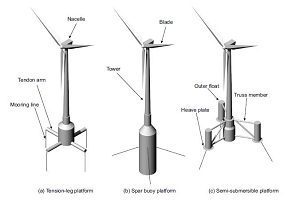
Session Introduction
Joop van Deelen
Solliance/TNO, The Netherlands
Title: Research and business cases for thin film solar cells: benefit of thinner, cheaper layers and tandem cells

Biography:
Joop van Deelen is senior scientist at TNO with 20 years of R&D experience and over 60 publications. He has covered a broad range of thin film PV related topics including deposition technologies, optics, front contacts, R&D strategy and business case development. In addition to his R&D activities, he consults companies on technical and strategic level in various parts of the world.
Abstract:
R&D has had a major impact in the rise of renewable energy. In addition to basic research, dedicated development enables the increase of the energy conversion efficiency. However, in the competitive market economy, companies have to make strategic choices about the viability of innovation directions. For this reason scientific, technical and economic aspects need to be combined to make smart choices in innovation.
We present several innovation routes in which Solliance has activities: improved transparent contacts, reduction of CIGS layer thickness, cheap absorber layers and tandem cells. Each innovation route has its specific advantages, but is connected to equally specific requirements to the layers surrounding the absorber, which need to be addressed. The efficiency increase and the cost associated with the technological solutions result in a balance, which is the net advantage.
For instance, thinning of the CIGS layer brings a significant cost reduction [1,2]. However, light management technology [3] and enhanced surface passivation is needed to keep the efficiency as high as possible. This leads to a range of innovation scenarios including various device designs and material choices, which will be detailed, from which the best choice becomes apparent. A vital element is the interdependence of all these factors. For different absorber layer thicknesses, different preferred adjacent technologies emerge for passivation and light management.
For improved transparent contacts, we have modeled and demonstrated the benefit by adding metallic grids on the TCO, as shown in figure 1 [4-6]. Here we also discuss the technical challenges, the economic perspective and the trade-offs involved.
One of the spearheads of modern thin film PV research is the development of perovskite solar cells. It gives the promise of cheap and abundant source materials and low-cost coating technologies to make devices. However, in addition to the limited life time, we should clearly envision the impact of such a new material and the impact on the cost structure. In addition, the promise of very high efficiency in the case of large area tandem cells can be regarded as a mid- to long-term strategy and also here the technical and economic pros and cons are reviewed.
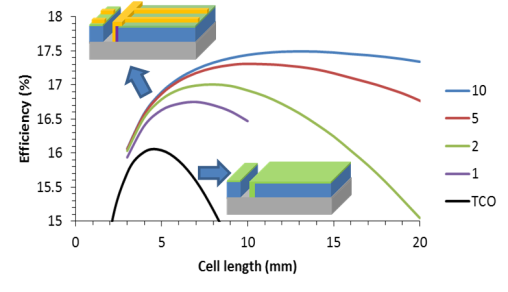
- Track 3:Bioenergy | Track 7: Advanced Technology
Session Introduction
Martin Mittelbach
University of Graz, Austria
Title: Future Perspectives of Advanced Biofuels
Time : 12:00-12:30

Biography:
Martin Mittelbach is a leading scientist in the field of biodiesel since over 30 years. Since 1993 he is head of the working group: „Chemistry and technology of renewable resources“ at the University of Graz, Austria. He is the author of over 110 scientific publications in reviewed journals, editor and author of several books on biodiesel and he is inventor of several patents on biodiesel production technologies. He has had cooperations and projects on biodiesel with numerous national and international research organisations, he was invited for key presentations or guest professorships at bioenergy conferences and research organisations around the world. In 2015 he received the European Lipid Technology Award from the European Federation for the Science and Technology of Lipids.
Abstract:
Biofuels are fuels produced from any kind of biomass source, which could be the whole biomass like plants or wood, fermented biomass for biogas and biomethane or extracted products like fats and oils. There is a big variety of different fuels existing (Figure 1), however, the most developed fuels are bioethanol and biodiesel, which have been commercialized worldwide since over 20 years. There are many national and global mandates and incentives existing in order to promote biofuels; the main goal of these actions is the overall reduction of green house gas emissions. Advanced biofuels are fuels which lead to a significant reduction of greenhouse gases, e.g. fuels from waste and non food feedstocks, or are so-called drop in-fuels which could be used in higher blends in special applications like aviation fuels.
The paper gives an overview on the latest developments of technology and utilization of advanced biofuels but also describes the future and perspectives of biofuels. Especially the different legislations, e.g. the latest development of the European Directive of Renewable Energy are highlighted. As environmental issues like sustainability and life cycle assessment (LCA) have been discussed quite controversially, especially the food vs. fuel discussion, direct and indirect land use change, this presentation tries to evaluate the pros and cons to give a proper basis to evaluate the future potential of biofuels.
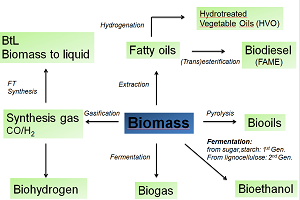
Aidan M Doyle
Manchester Metropolitan University, UK
Title: Zeolite catalysts prepared from shale rock and kaolin for biodiesel synthesis
Time : 12:30-13:00

Biography:
Aidan M Doyle is an Industrial Chemist and Faculty Member in Physical Chemistry at Manchester Metropolitan University, UK. He has conducted his PhD at the
University of Limerick and he was a Post-doctoral Research Fellow at the Fritz-Haber-Institute of the Max-Planck-Society, where he worked on a Johnson Matthey/
EPSRC funded project exploring the interaction of hydrogen and hydrocarbons with precious metal heterogeneous catalysts. He is also a Guest Editor of Catalysis
Today, a Committee Member and former Treasurer (2012-2016) of the British Zeolite Association (BZA) and was the main Organizer of the Gordon style 2009 BZA
meeting.
Abstract:
Biodiesel is an alternative fuel produced by the transesterification of natural oils using heterogeneous catalysis. Here, Faujasite (FAU) zeolites were prepared using Iraqi kaolin and Irish shale rock and tested as catalysts in the esterification of oleic acid (a simulated fatty acid frequently used as a model reaction for biodiesel production). For preparations using shale rock; a systematic study was conducted (over the stated preparation ranges) by varying the Water:Shale ratio (4:1 to 15:1, by mass) and mixing (1-24 hours), aging (6-48 hours) and hydrothermal treatment times (6-72 hours) to determine the optimal parameters. XRD confirmed that the Faujasite product purity was highly dependent on the experimental conditions used and that its crystal purity was comparable to that of a commercial zeolite Y. The BET surface area of the calcined FAU-type zeolite was 571 m2g-1. The prepared zeolite was catalytically active in the esterification of oleic acid with ethanol reaching a maximum of 78% conversion after 90 minutes, which is practically identical to that recorded for commercial zeolite Y for preparations using kaolin; XRD confirmed the characteristic FAU structure of zeolite Y (Si/Al ratio 3.1), and BET adsorption showed that the surface area was 390 m2g-1. The optimum conditions for the oleic acid esterification were observed at 70 °C, 5 wt% catalyst loading and 6:1 ethanol to oleic acid molar ratio. The oleic acid conversion using the zeolite prepared from kaolin was 85% after 60 minutes, while the corresponding value for a commercial sample of HY zeolite was 76%. Our findings show that low Si/Al ratio zeolite Y is a suitable catalyst for esterification, which is in contrast to the widespread view of the unsuitability of zeolites, in general, for such applications. A full set of data showing structural characterization and catalytic testing will be presented at the conference.
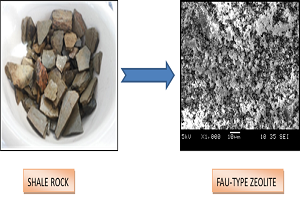
Soo-Young No
Chungbuk National University, Korea
Title: Application of bioethanol in dual-fuel combustion – A review
Time : 13:45-14:15

Biography:
Soo-Young No has his expertise in atomization and sprays, combustion and emission characteristics in applying the liquid biofuels to internal combustion engines, particularly compression ignition engines. The review papers on liquid biofuels published by him include the biodiesel obtained from inedible vegetable oils (Renewable and Sustainable Energy Reviews 2011,131-140, Atomization and Sprays 2011,87-105), alcohols such as methanol, ethanol (submitted to Applied Energy) and butanol (Fuel 2016, 641-658), bio-oil (Renewable and Sustainable Energy Reviews 2014, 1108-1125), straight vegetable oil (Renewable and Sustainable Energy Reviews 2017, 80-97), BTL diesel, hydrotreated vegetable oils (Fuel 2014, 88-96).
Abstract:
According to the importance of ethanol as an alternative biofuel and the current research trends towards more advanced internal combustion (IC) engine, it is required to fully understand the combustion and emission characteristics of advanced CI engines fuelled with ethanol. The main concern in this review is the application of bioethanol to one of advanced compression ignition (CI) engines, dual-fuel combustion (DF). DF combustion strategy is one idea to overcome the challenges of HCCI combustion mode. HCCI is limited to low loads because at high loads, the occurrence of excessive pressure rise rates resulted in the pressure ringing and audible noise. The aim of this study is to provide a comprehensive overview of the literature on the application of bioethanol in DF combustion. This review is a part of an on-going review project of application of bioethanol to the advanced CI engines. In this review, it is found that the method for ethanol-diesel dual fuel combustion in CI engine can be divided into four categories: i.e.1) PFI of the ethanol and DI of the diesel in cylinder, 2) PFI of the diesel and DI of the ethanol, 3) dual fuel direct injection, 4) ethanol PFI and diesel DI with split injection. Of four techniques, the ethanol PFI and diesel DI was the prevailing technique to be studied in the dual fuel combustion. Instead of neat ethanol, E85 was introduced by several researchers to DF combustion mode. However, there is only one study introduced the hydrous ethanol in ethanol-diesel DF combustion mode. In addition, instead of neat diesel fuel, biodiesel was utilized as the ignition source. In this case, biodiesel produced from the inedible vegetable oils are more desirable. The parameters affected to DF combustion include premixed ratio, compression ratio, injection pressure, exhaust gas recirculation (EGR), intake boost, diesel pilot timing and intake temperature. To quantify the ratio of two fuels in any DF configurations, three different bases, i.e. mass flow basis, energy basis and power basis were introduced. The energy basis was the prevailing method for evaluation. In the DF combustion mode, a higher premixed ratio up to 66% was capable of decreasing NOx and soot emissions, while incomplete combustion products such as HC and CO were generally higher than those of conventional diesel combustion. It was found that the wide
range of values was introduced for the acceptable PRR and COVIMEP. The use of ethanol in DF combustion in CI engines is suitable for the high load LTC enabling.
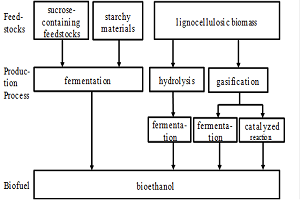
Eyad H R Fadda
Sultan Qaboos University, Oman
Title: The use of Remote Sensing and GIS to determine changes in Land Use: Causes of Land Degradation in Barka Province, Oman
Time : 14:15-14:45

Biography:
Eyad. H. R. Fadda is with Department of Geography, Faculty of Arts and Social Sciences, Sultan Qaboos University, Muscat, Sultanate of Oman, His research area includes the application of GIS and Remote sensing in Geo-sciences, Natural Geo-Hazards and Environment. He is a member in many National and International Committees and Journal Editorial boards. He has been involved in many applied research projects, in various areas of Jordan, Saudi Arabia and Oman. He has more than 40 scientific paper and an article in the international scientific journals and in international conferences.
Abstract:
Many studies indicated the increase of the proportion of urban areas over the arable land in many provinces of the Sultanate Oman, this came as a result of urban growth and development processes taking place since the era of the Renaissance which started in 1970. Consequently, spatial variation in land use is an important issue to be taken in to consideration, because lands may be converted to be less productive, due to the lack of raw soil, vegetation and water. Moreover, the human exploitation of the limited resources in different ways, in addition to the natural factors of droughts and floods and urbanization all that will eventually lead to land degradation. Barka province (wilayat) in al Batinah Governorate one of provinces, which has been affected by land use, changes due to several reasons. Therefore, this study will focus on determination of land use changes, whether commercial or residential that have been occurred in the province, in addition to the loss of agricultural areas and fertile land during the period from 2010 to 2014. Remote sensing and geographic information system (GIS) were utilized in order to delineate and to determine the cause of shrinking in the arable land and fertile land. Satellite images were used to detect the change in land use/land cover by applying selective digital image processing techniques such as supervised classification and change detection. Thematic maps were prepared using GIS software with attribute data about the land uses in the study area, which highlight and show the impact of urban growth on land degradation.
Rania Mona Zeid Alqaralleh
University of Ottawa, Canada
Title: Biogas Recovery from Hyper-thermophilic Anaerobic Co-digestion of Thickened Waste Activated Sludge, Organic Fraction of Municipal Solid Waste and Fat, Oil and Grease
Time : 14:45-15:05

Biography:
Rania Mona Zeid Alqaralleh is a PhD candidate in the Department of Civil Engineering at the University of Ottawa, Canada. Her doctoral work investigates the thermophilic and hyper-thermophilic anaerobic co-digestion of thickened waste activated sludge and fat oil and grease (FOG), liquid portion of FOG (L-FOG) and organic fraction of municipal solid waste (OFMSW). Her research aims to improve the biogas production from solid organic waste using different waste combinations, pretreatment methods and thermal enhanced treatment.
Abstract:
In the light of climate change, environmental challenges and raising demand on energy, the quest toward developing renewable energy has become an urgent necessity. Renewable energy industries, investments, and related policies have been developed incredibly fast in the recent years [1]. A potential renewable energy source is biogas harvested from different types of organic wastes. Anaerobic digestion (AD) is one of the leading methods applied for generating biogas from organic waste. However, the biogas utilization in wastewater treatment plants (WWTPs) is still limited; for example, in the US less than 10% of the WWTPs produce biogas for beneficial use such as heat and power generation [2]. The WWTPs industry is facing real challenges in deploying the biogas production and utilization, such as; the slow biogas generation rate during the AD process, the low energy content (methane%) of the biogas, and the costs to upgrade the biogas [2,3]. In this study the anaerobic co-digestion of thickened waste activated sludge (TWAS) and the suitable organic wastes will be used to overcome some of the significant economic challenges by improving the AD process, increasing the biogas production with higher methane content, and reducing the final volume of waste. The feasibility of using hyper-thermophilic anaerobic co-digestion of TWAS, organic fraction of municipal solid waste (OFMSW), and fat, oil and grease (FOG) in producing biogas from solid waste will be established. The hyper-thermophilic co-digestion at high temperature (70áµ’C) has the potential to improve the anaerobic degradation of the organic waste mixture [4]. Whereas the use of OFMSW and FOG with the right concentrations will not only improve the C: N ratios in the digestion mixture leading to a significant increase in biogas production, but it also helps in converting these organic waste streams from landfills and that means increasing the lifespan of existing landfills and improving the sustainable development by improving waste to energy conversion.
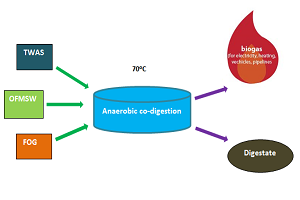
Parinaz Bashi Shahabi
Iran University of Science and Technology, Iran
Title: Using multi attribute theory for making trade-offs between material, quality, cost and sustainable product development
Time : 15:05-15:25

Biography:
Parinaz Bashi Shahabi is masters' student at Iran University of Science and Technology. She received her BSc degrees in department of metallurgy and material engineeringfrom Ferdowsi University of Mashhad. Her research activities and master's thesis include sustainable designs, product development. She has researched on synthesis of advanced materials andis interested on sustainability of final design by using environmental materials and increasing quality. She did several researches on cost and quality of some advanced materials which are synthesized by her. She also did some works on steel’s friction spot welding by testing relative factors on welding which is strongly beneficial for environment, cost and quality of welding.
Abstract:
The decisions made during product development (PD) lock in 70–80% of the total product cost, and the quality of the product is also largely fixed. Therefore, decisions which are taken during the PD process have a great influence on product life cycle cost, quality and sustainability. The most important point of the PD process where trade-offs are made is in the concept phase when defining design specifications based on customer requirements. Developing a model to support trade-offs for sustainable PD is a significant concern for designers. This research attempts to consider these features simultaneously to make trade-offs between environmental issues and other customer requirements to select the best design specifications on their basis. In this research, sustainability is considered as a customer requirement, which then is translated into design specifications. Sustainable design is treated as an optimization problem to maximize value-added activities while minimizing environmental effects. A scoring model is defined to model sustainability, quality and cost in the PD process in order to find the optimum level of their combination therefore.
Juan S Chirivi-Salomon
University of the Andes, Colombia
Title: Enhancement of laccase activity in semi-solid culture of Pleurotus ostreatus by Cordyceps extract supplementation
Time : 15:45-16:05

Biography:
Juan S Chirivi-Salomon is a Chemical Engineer and Microbiologist, who has acquired expertise in basic Mycology throughout his careers. His work on entomopathogenic fungi, in collaboration with Dr. Tatiana Sanjuan, revealed two new species of Cordyceps with notorious potential in pharmaceutical and biofuel industries. In his Master of Science project, he has acquired huge knowledge about metabolomics of fungi, focusing his work in the industrial potential of fungal metabolites. He is researching on the effect of Cordyceps metabolites in the laccase production for lignocellulosic biomass treatment. In collaboration with Dr. Rocio Sierra, he is exploring new opportunities in the application of fungi and their metabolites in bioenergy industry. His work hope is to link different academic institutions and social foundations.
Abstract:
Laccases are multinuclear copper-containing proteins that catalyze the oxidation of aromatic and non-aromatic compounds in presence of molecular oxygen. Laccases are naturally produced by higher plants, insects, bacteria, and fungi. Nevertheless, white-rot mushrooms are currently desirable for the biofuel industry because of their diversity and versatility. From this group, the edible mushroom Pleurotus ostreatus (oyster mushroom) has been recently, widely studied due to its capacity to colonize several lignocellulosic substrates, among other properties. A previous research study showed the metabolomic profile and bioactivity potential of the raw extracts from Cordyceps nidus. Based on the biochemical nature of these extracts, we aimed to evaluate their effect in the laccase activity of P. ostreatus. We used a semi-solid-state system, using rice husk as substrate and a cupric-ion stimulant supplementation, as is previously recommended. A complete experimental design was implemented for metabolites extracted from Cordyceps mycelium growth in four different culture media, with three different solvents. Measurements of 2,2'-azino-bis (3-ethylbenzothiazolin-6-sulfonic acid) oxidation and extracellular glucose-content were performed as response variables. Peaks of enzymatic activity were found reaching over 8.000 U L-1 within the studied time. However, only water-fractioned extracts were found significantly different from experimental controls (p-value<0.05), without Cordyceps extracts addition. In conclusion, aqueous extracts of C. nidus cultured in Sabouraud dextrose agar with yeast
extract and brown rice medium significantly enhanced the laccase activity of P. ostreatus in the pre-stablished culture system. This study is the first report of the application of Cordyceps extracts in the enhancement of recycling treatment processes for lignocellulosic wastes. Studying opportunities by using P. ostreatus in the pre-treatment of lignocellulosic biomass for biofuel production is necessarily increasing. Accordingly, we need to deeply understand the mechanisms by which we could enhance laccase activity of white-rot fungi. A characterization of the bioactive compound is also recommended for future researches.
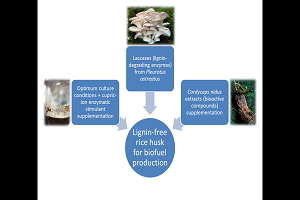
Muhammad Imran Asghar
Government College of Technology Kamalia, Pakistan
Title: Study of chemically synthesized rare-earth terbium substituted bam hex ferrites
Time : 16:05-16:25

Biography:
Muhammad Imran Asghar has worked as a Process Engineer in sugar and glucose production units. He is presently working as a Senior Instructor at Chemical
Technology Department in Government College of Technology Kamalia, Pakistan.
Abstract:
The current study focuses on Barium based rare-earth terbium (Tb3+) substituted M-type hexagonal ferrite materials with nominal composition BaTbxFe12-xO19 (x=0.00, 0.10, 0.20, 0.30) synthesized using Sol-gel auto-combustion technique. The rare-earth terbium (Tb3+) element has been substituted at Fe3+ site to investigate its effect on chemical, electrical and magnetic characteristics of M-type hexagonal ferrite. All the prepared samples were sintered at temperature 1000oC as estimated from the DSC-TGA analyses to obtain the single phase ferrite component. The labeled peaks appeared in different EDX spectra confirm the presence of Ba, Tb and Fe elements in the synthesized compounds. The concentration of (Tb3+) increases, while that of Fe3+ decreases, which shows the replacement of rare-earth terbium (Tb3+) ions with that of Fe3+ ions. XRD analysis confirms the successful formation of single phase rare-earth terbium (Tb3+) substituted ferrite materials. This crystallite range was set up to fall near the value of 65.15-37.35 nm, which is suitable to achieve the best signal of noise for recording components. Scanning Electron Microscopy laboratory analysis exhibits the geometry of grains in hexagonal shape. X-ray density improves from 8.084-8.359 g/cm3 and the bulk density enhances from 5.78-5.93 g/cm3.
